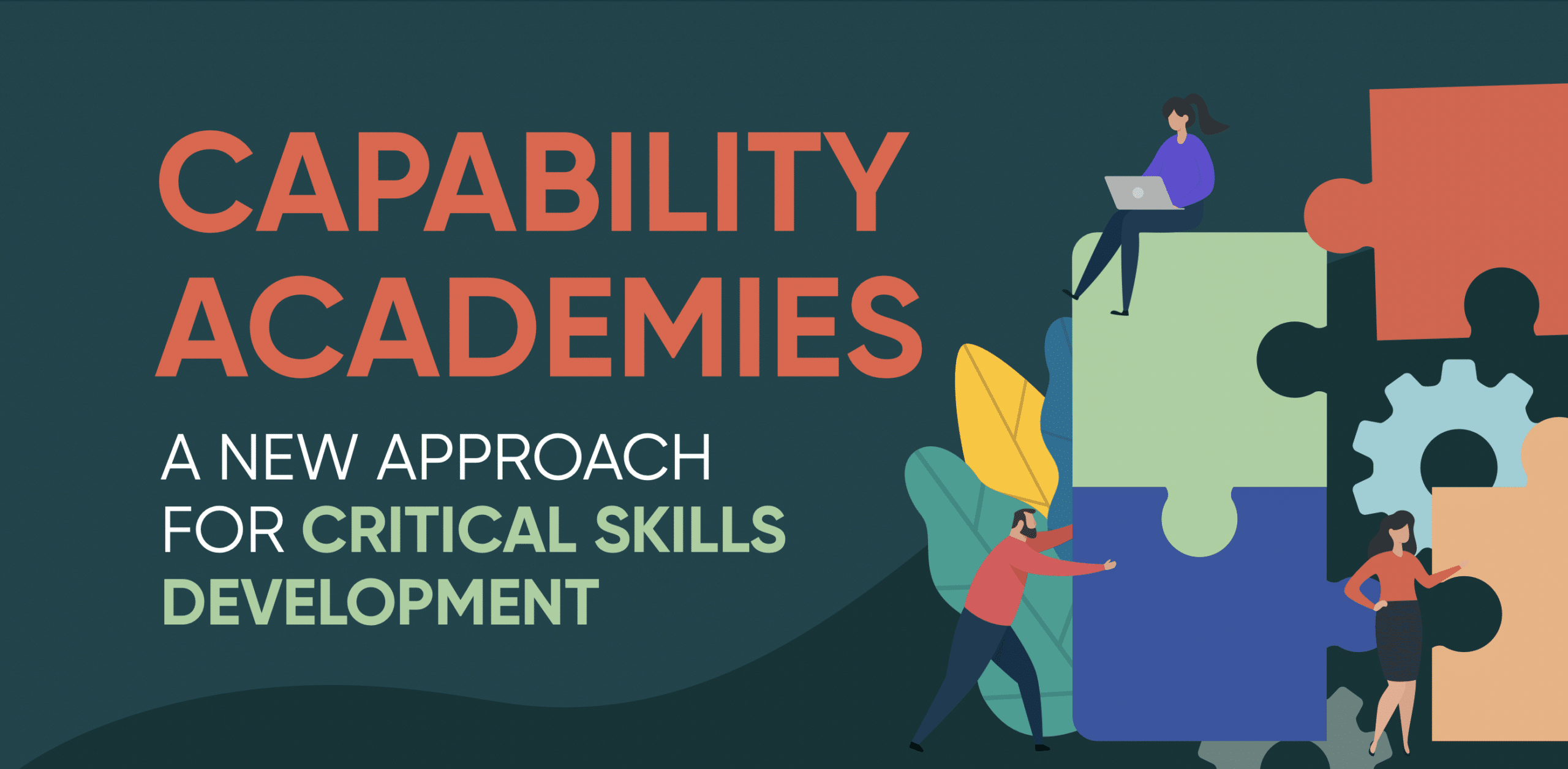Capability Academies by Josh Bersin Infographic

Today, modern organizations are investing in capability academies: places to go to learn, share, and build expertise together. Unlike the physical corporate universities of old, the new academies build strategic, contextualized skill-sets, the source of an organization’s competitive advantage and the solution to broad problems like “integrated customer service,” “digital transformation,” “sustainability mindset” and “global enterprise sales performance.” Moreover, they crystallize corporate memory and institutional wisdom so that it can be transferred continually to new cohorts. As the culmination of many trends, Capability Academies are the next step in the learning evolution.
Learn more about capability academies in this infographic, or watch the webinar for more in-depth information from Josh Bersin.

Corporate capabilities are the next wave; they strategically align learning in the flow of work.
Traditional training is:
But capability academies are:
Capability academies are a collaborative learning space where people can advance their job-related capabilities.
Use the SPACE model:
Excerpted from The Josh Bersin Company’s Webinar: Capability Academies: A New Approach for Critical Skills Development — A LX Signature Series
Capability Academy, Capability Building Training, Capability Academies
Blog
In a Harvard Business School case study titled Creating a virtual internship at Goldman Sachs, the authors describe how The Goldman Sachs Group successfully transitioned a program serving thousands of interns into one that became entirely virtual.
Blog
Craig Weiss of The Craig Weiss Group, renowned for his expertise in learning technology, e-learning and AI in the workplace, spoke about AI In L&D: Roles, Risks, and Opportunities.
Blog
For Marriott, emerging from the pandemic presented a key opportunity to take stock and strategize how to improve worker retention and customer service — and the hospitality chain recognized that cultivating the best possible leaders was essential for navigating the changing landscape.
Blog
Learning management is a perennial challenge for L&D teams. Despite the emergence of more sophisticated learning and business analytics techniques, struggles with learning measurement persist at frustrating levels. Closing the gap between the boardroom and L&D around actual business or organizational impact is a required skill for learning leaders to master.
Blog
A social learning platform activates the deep and continual skill development needed for enduring behavior change in the context of modern business.
Blog
NovoEd enables executive education providers to build online learning experiences for custom executive education programs, open enrollment courses, and more.